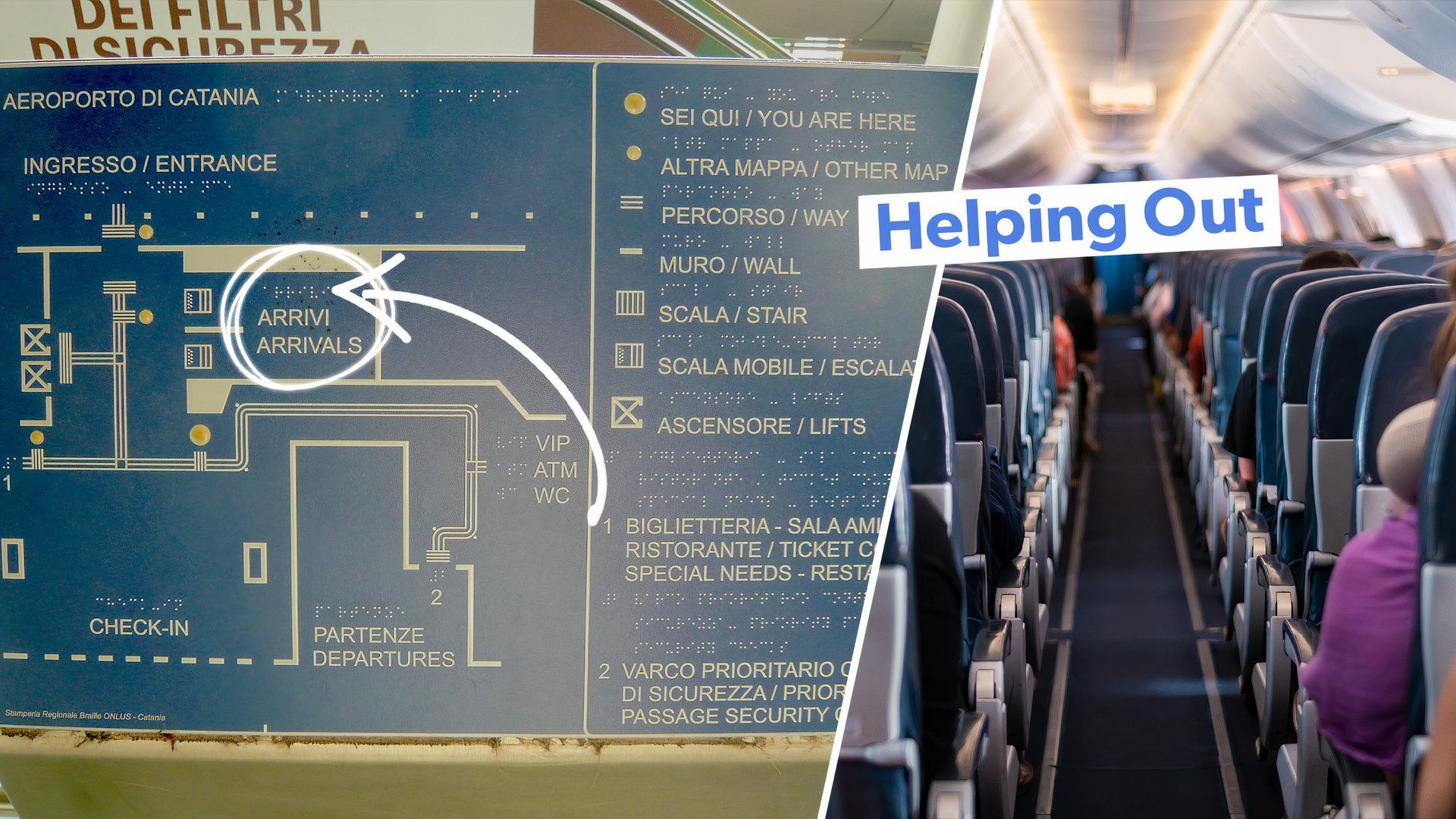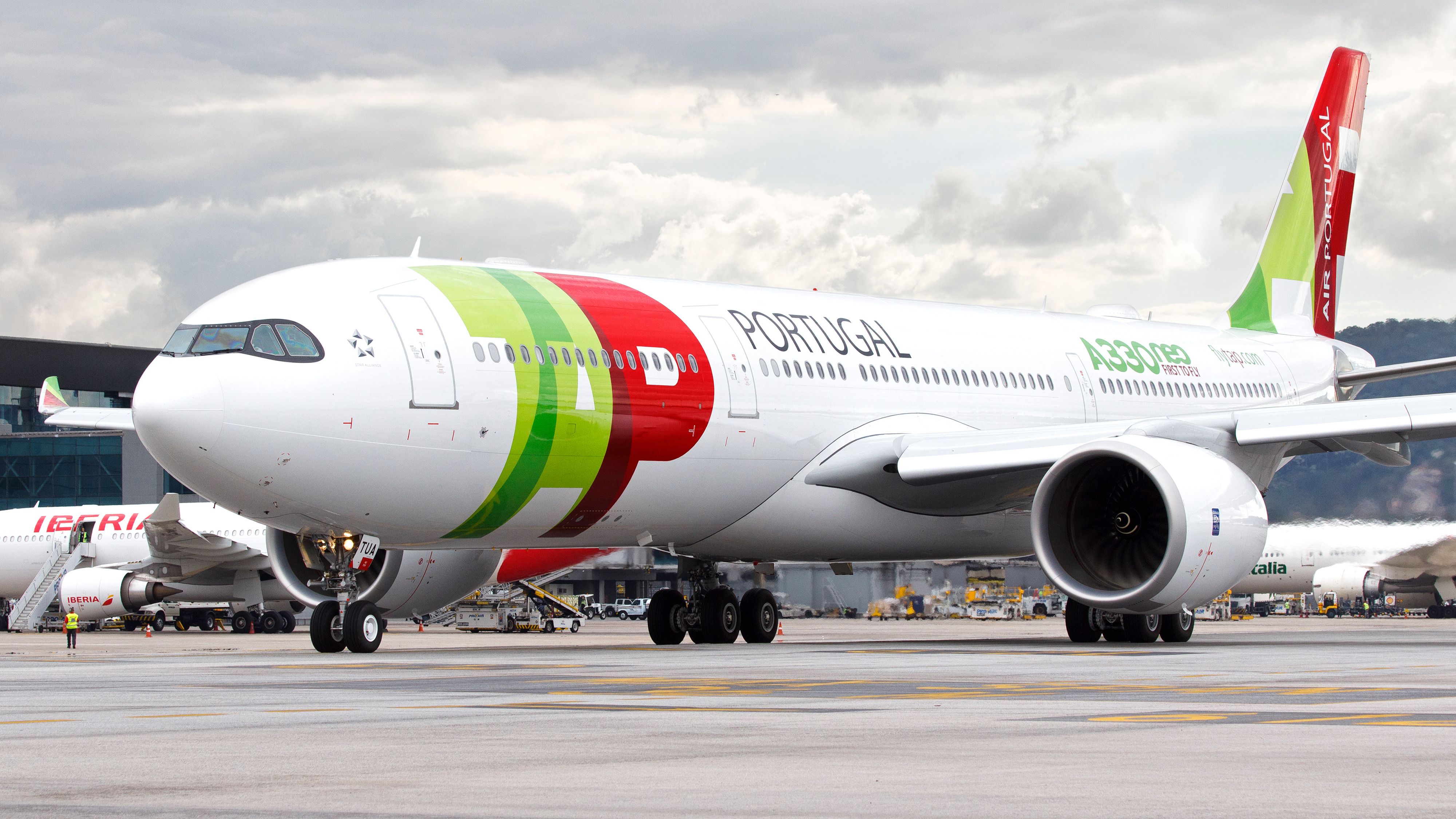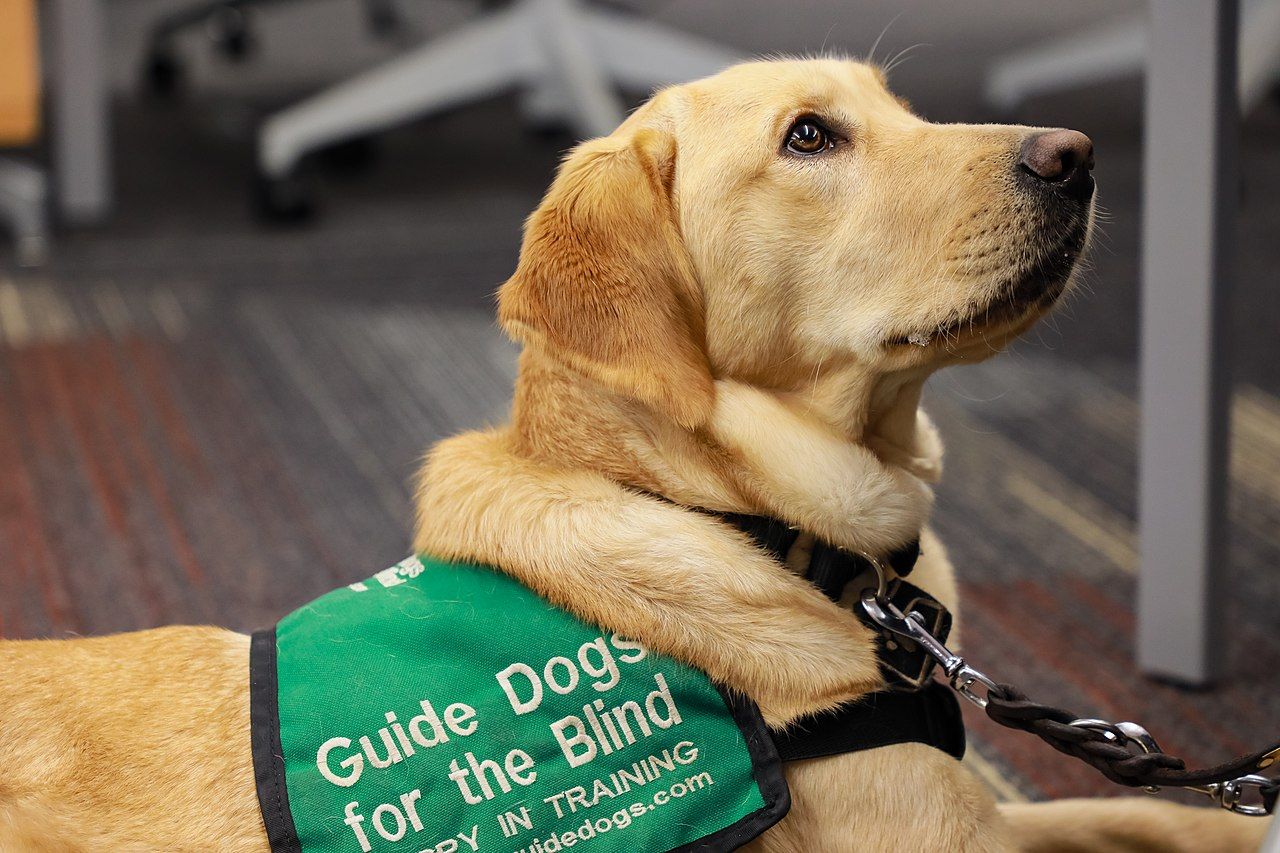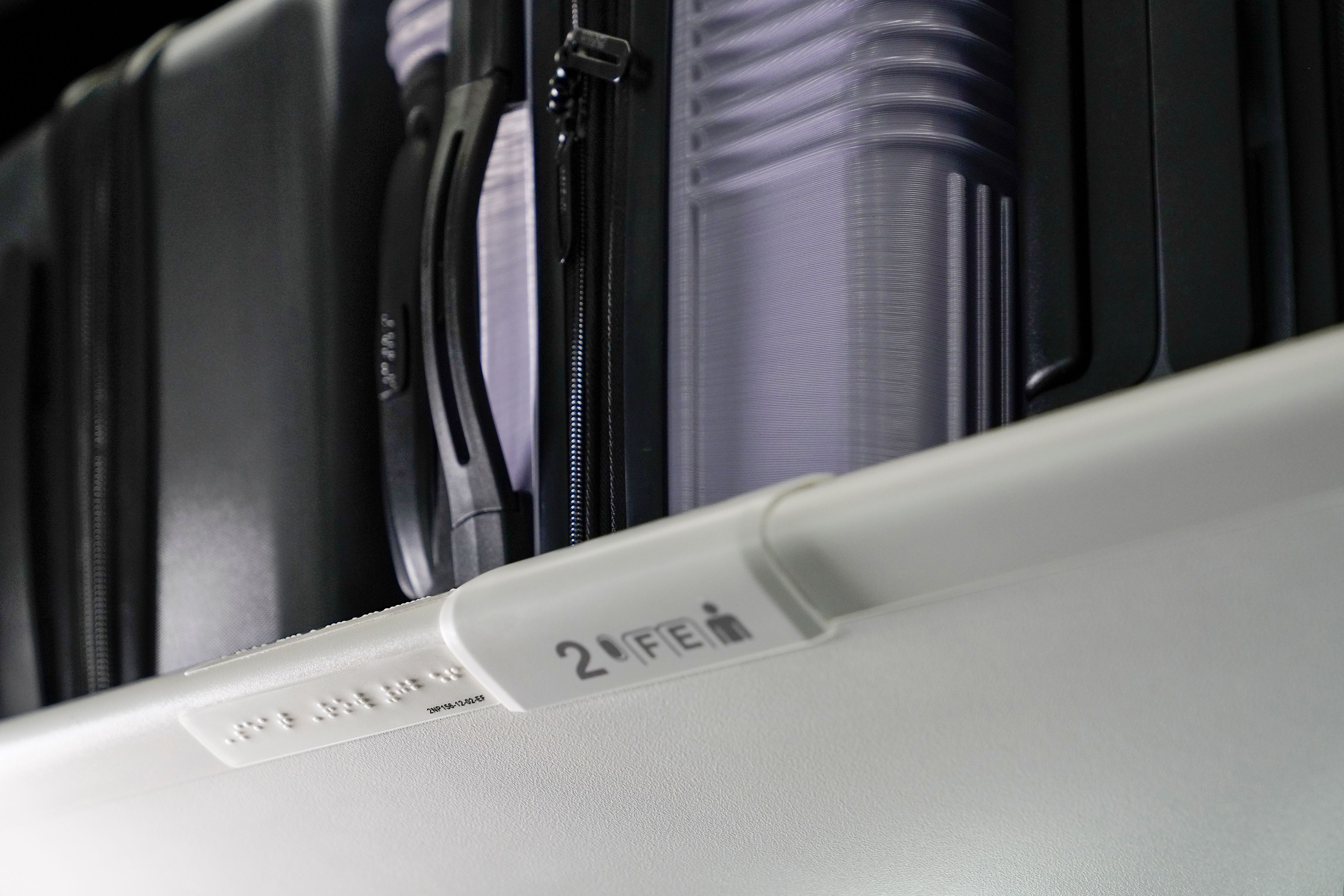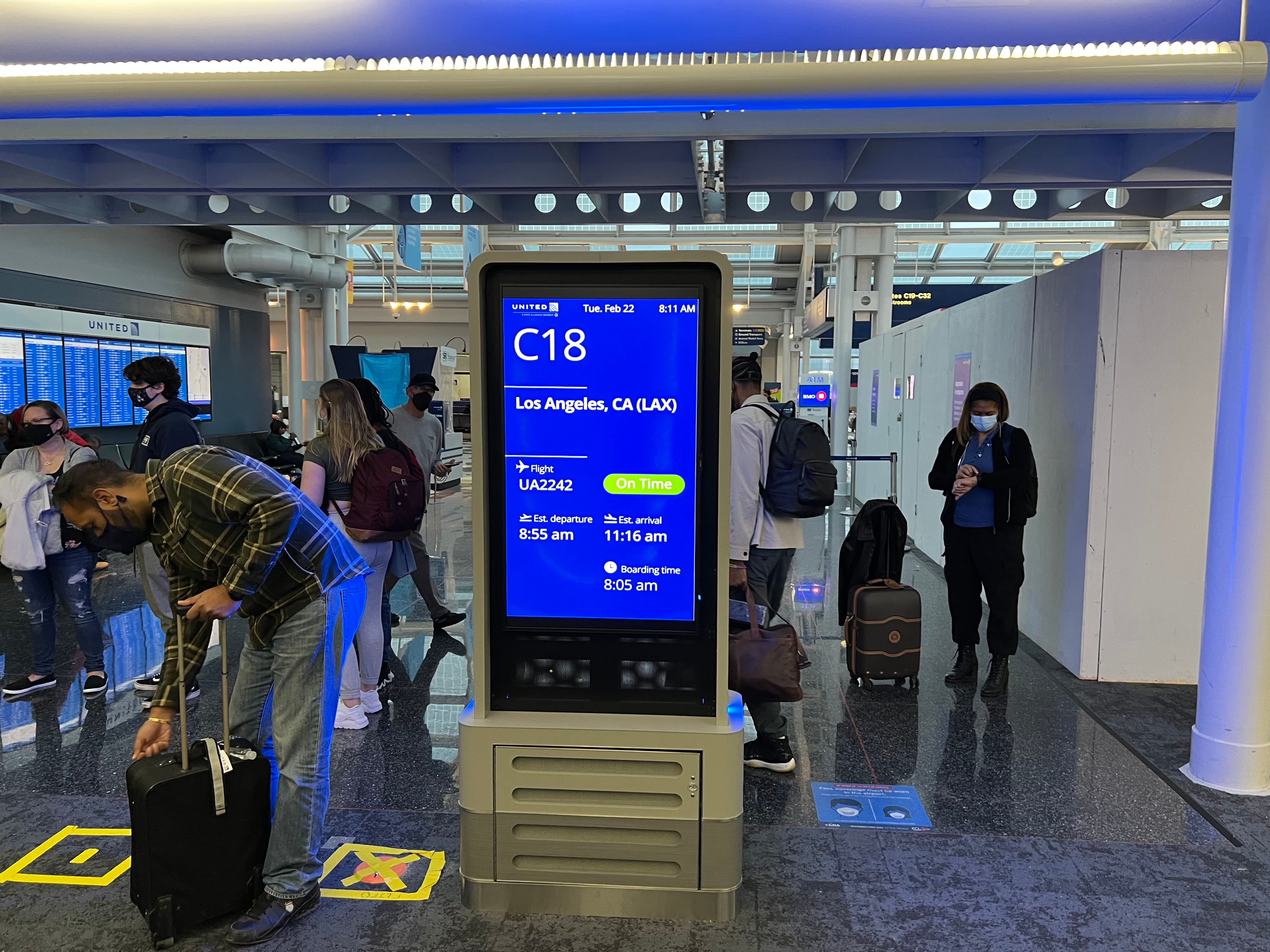Imagine a passenger getting preparing for a trip. They start with the ritual of booking a flight, trying to decide between a window or aisle seat—because who doesn’t love a good view or easy access to the bathroom? Once that’s sorted, they head to the airport, where the real fun begins. Here’s how their journey unfolds:
- Airport arrival: Facing the wild adventure of finding the check-in counter. Some may do it on their phones. However, if one has check-in bags, they must find out how to check in their luggage without losing their mind.
- Security check: Navigating the chaos of trays and bins. Good luck keeping track of that laptop.
- Finding the gate: Playing “Where’s my gate?” in a sprawling terminal, complete with a mini-workout.
- Boarding: It’s a slow-motion race to the plane, whether on the jet bridge or the stairs.
- In-flight experience: Finally plopping into their seat and preparing for takeoff. Is there a movie to watch?
For a traveler with a visual impairment, though, this whole process can be a lot more challenging. Fortunately, airlines and airports are progressively making air travel more accessible and less stressful for those with vision loss.
Personalized assistance and pre-boarding services
One way airports and airlines help the visually impaired is by providing special assistance services. On request, airline workers will take passengers from check-in counters to security, boarding gates, and onboard the aircraft. This individualized help guarantees that travelers don’t miss essential steps or get lost at the airport.
TAP Air Portugal
, for instance, provides personal assistance to visually challenged customers. Upon request, airline staff may help customers with check-in, boarding, and security checks, among other aspects of the airport experience. In addition to providing assistance, these services help keep travelers updated at every stage of the trip.
Photo: Matheus Obst | Shutterstock
Staff training and awareness programs
Airlines such as Virgin Atlantic
and Qantas
emphasize staff training to cater to passengers with visual impairments. Qantas, for example, trains its crew members on how to guide and communicate with blind and visually impaired passengers effectively. This training includes learning to explain the physical layout of the aircraft, identifying safety equipment, and providing guidance on emergency procedures through clear verbal communication.
Virgin Atlantic has gone further by partnering with Guide Dogs UK, a nonprofit that helps visually impaired people. This agreement enables Virgin Atlantic crew members to have hands-on experience with guide dogs and learn the best practices for assisting passengers with them. The airline’s focus on assisting travelers with guide dogs indicates its commitment to building an inclusive environment.
Onboard accessibility enhancements
Technological advances are also helping to improve accessibility for visually impaired passengers. ![]() United Airlines
United Airlines
, for example, announced plans to install the Braille alphabet aboard its planes. By 2026, the airline plans to equip its fleet with Braille signs for seat numbers, rows, and restrooms. This modification makes it easier for travelers with visual impairments to navigate the aircraft on their own, minimizing the need for them to rely entirely on flight attendants for assistance.
Similarly, several airlines have audio-described in-flight entertainment (IFE) systems that allow customers to navigate movies and TV shows and listen to music while getting detailed verbal descriptions. This feature is also a step towards improving the in-flight experience for visually impaired customers.
Photo: United Airlines
Assistance at airports
Airports throughout the world are also enhancing accessibility for visually challenged passengers. Many have specialist support teams that can aid travelers with check-in, security, and boarding processes. Some airports have included cutting-edge technologies to accommodate travelers with vision impairments, in addition to these human-led services.
In the US, some airports are experimenting with interior navigation applications such as Aira and GoodMaps, which provide real-time audio explanations to assist visually impaired passengers in navigating the airport. These applications employ GPS and Bluetooth to provide travelers with turn-by-turn instructions and information about local amenities like bathrooms, gates, and eateries.
San Francisco International Airport
utilizes smartphone apps with accessible features that offer real-time navigation assistance within the airport terminal. These apps, with voice guidance, allow blind and visually impaired passengers to independently navigate the airport with greater confidence.
Additionally, some airports, such as Chicago O’Hare International Airport
, boast interconnected terminals, eliminating the need for confusing train or shuttle transfers. The airport assists travelers with vision impairments by offering services like orientation and mobility assistance, tactile maps, and guide dog relief areas. Additionally, trained staff are available to provide personalized support throughout the airport experience.
Photo: Pranjal Pande | Simple Flying
Challenges remain
While tremendous progress has been achieved, there is still potential for development. The US Government Accountability Office (GAO) emphasizes long-standing concerns such as the variable provision of accessible bathrooms on airlines. Furthermore, providing timely access to all flight information via audio announcements is also critical.
A collaborative effort to improve accessibility
The government is putting efforts into improving accessibility as well. To do so, the US Department Of Transportation
(DOT) actively collaborates with airlines, airport operators, and disability advocacy organizations, such as the American Council of the Blind and National Disability Rights Network. These partnerships focus on sharing best practices, providing training programs for airline employees, and enacting regulations that assure compliance with accessibility requirements.
As the aviation sector evolves, airlines and airports have become more accessible, ensuring that visually impaired travelers receive the assistance they require. From Braille signage and specialist staff training to new navigation applications and guide dog partnerships, these projects demonstrate a dedication to accessibility and diversity.

